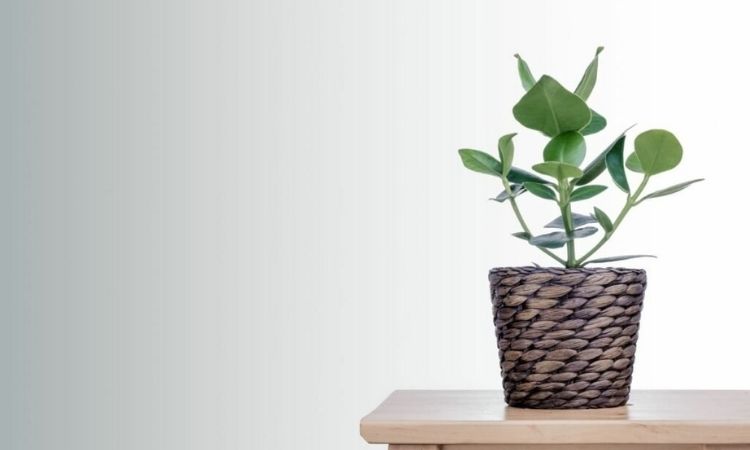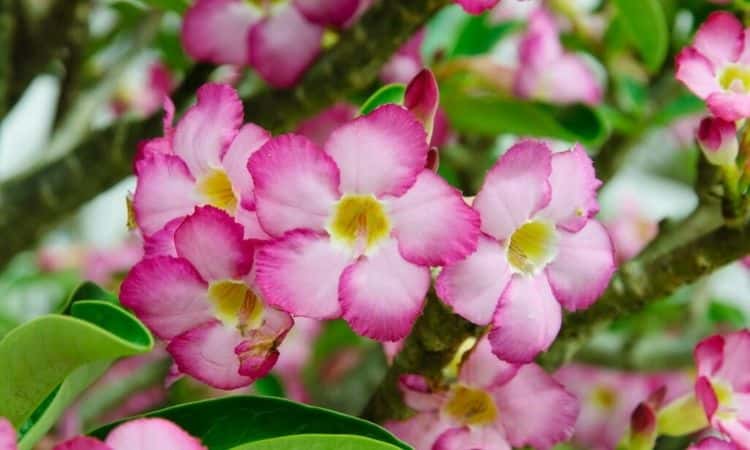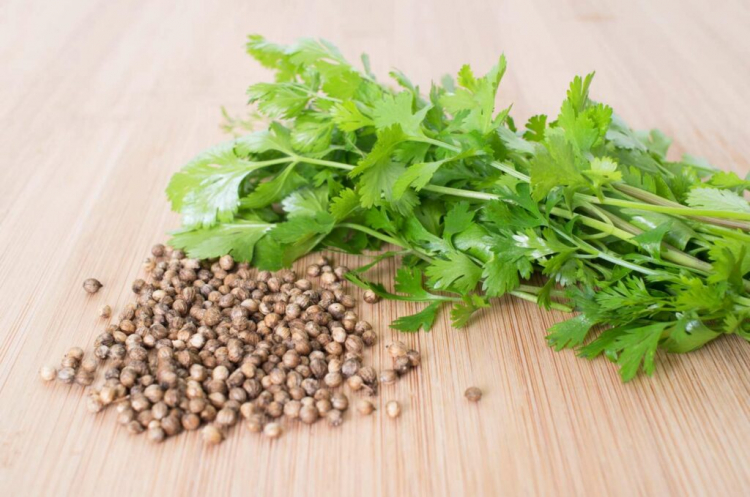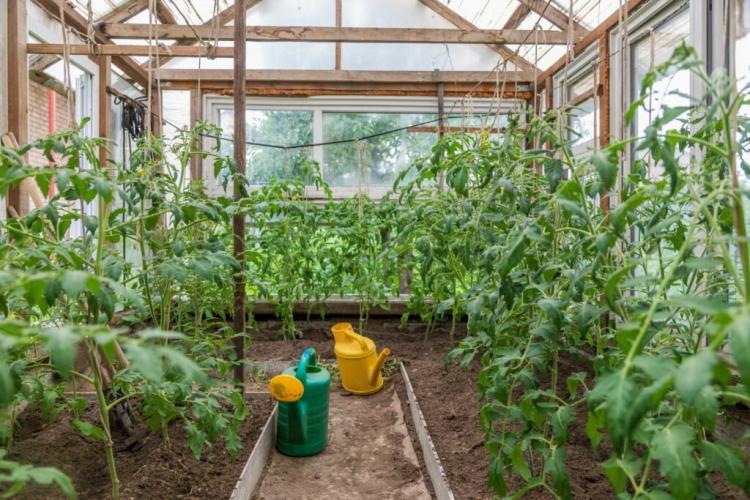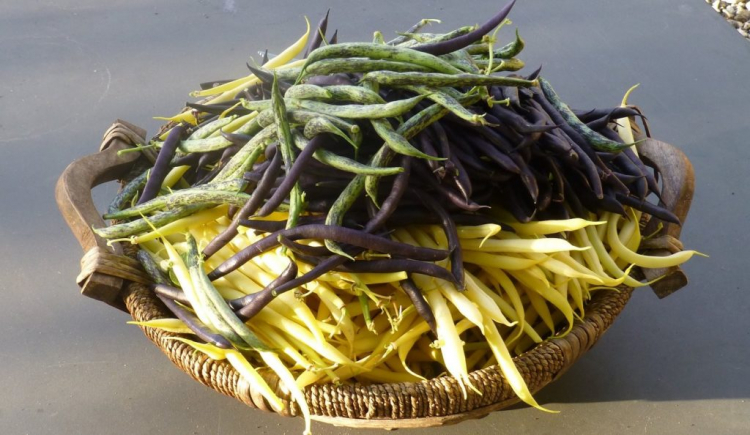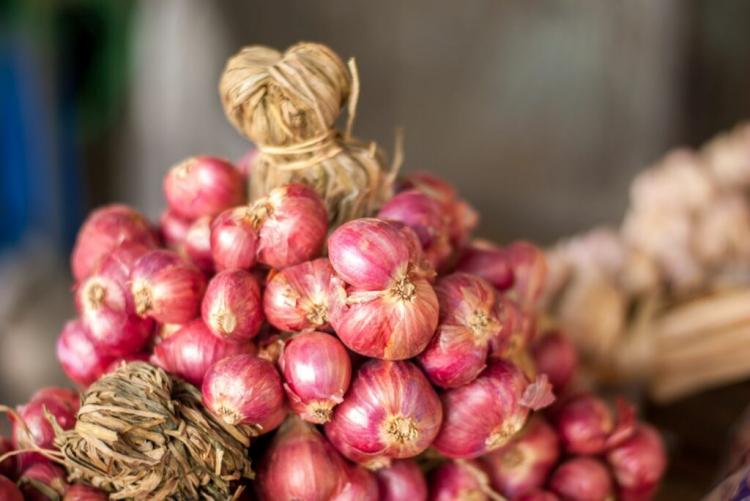Balsam Apple: Location, Care And Propagation Of Clusia
The balsam apple is reminiscent of a rubber tree because of its leaves, but it can also produce beautiful pink flowers if cared for ideally. Here you can learn everything about the location, care, and propagation of the balsam apple. It does not take much to marvel at the balsam apple in your own home. Once you have a specimen of your own and have chosen a suitable location, only occasional care measures are necessary. What you need to consider and how you can propagate your balsam apple yourself, you will learn here.
Balsam Apple: Flower, Origin, and Properties
Table of Contents
Balsam Apple (Clusia) is a genus of the Clusicacea family. Often the name “balsam apple” is used synonymously for the species Clusia rosea and Clusia major. The plant is also known as rose clusia and autograph tree. The succulent balsam apple is native to the Caribbean and is also found in the tropics of South and Central America.
It is an evergreen, hemiepiphytic plant – that is, the balsam apple begins its life in the crowns of other trees and over time develops roots toward the ground. In nature, the balsam apple becomes a shrub or tree up to 18 meters high, while in indoor culture, under ideal conditions, it can reach a height of three meters. However, the plant can retain smaller dimensions depending on pot size and pruning measures.
The leaves of Clusia are large, fleshy, and of rich green color. They are reminiscent of some species of ficus, which is why the plant is also called a balsam fig. However, there is no close relationship here. When the balsam apple is comfortable, it forms decorative white or pink flowers in summer, which smell of vanilla. A plant lamp can aid in flower formation.
The small, apple-like fruits, on the other hand, are extremely rare in houseplants because both a female and male plant must be present for fertilization. Both sexes of flowers emit a sweet-smelling sap designed to attract insects for pollination. The flowers must be pollinated by hand with a brush in the absence of insects.
Because the leaves of the balsam apple are very thick and leathery, words can be carved into them with pointed or sharp objects. Thus, it is also possible to leave an autograph on the leaves of the tree, which has given the plant the name “autograph tree”.
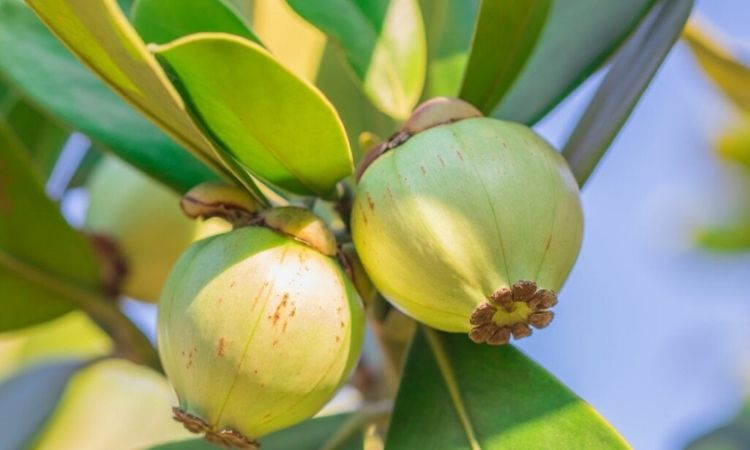
The Most Beautiful Species And Varieties
When people talk about the balsam apple, they often mean the species Clusia rosea, although, of course, there are other species and varieties of balsam apple.
- Clusia Rosea ‘Princess’: this variety is widely used as a houseplant. It has slightly smaller leaves than Clusia rosea.
- Clusia major: Clusia major and Clusia rosea look very similar and are therefore usually considered as one species. They differ slightly in leaf shape and color.
- Clusia rosea ‘Variegata’: The leaves of this cultivar are variegated green and white, making them particularly eye-catching.
- Clusia lanceolata: With its narrow, pointed leaves, this species looks somewhat different from its relatives. However, in terms of care, it does not differ.
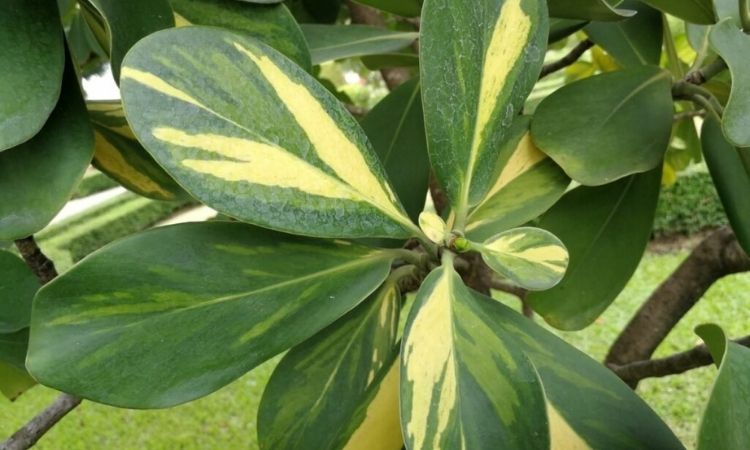
Planting Balsam Apple: Location, Timing, And Procedure
The balsam apple is a rather undemanding plant and will thrive without much care if placed in a suitable location.
Place the balsam apple in a bright and warm spot. The tree does not tolerate direct sun or shade, but sufficient light is important for healthy growth. The temperature should be about 20 °C all year round and never drop below 15 °C. If these temperatures are reached outside in summer, you can place the balsam apple in a sheltered spot on the balcony.
In addition, the Clusia likes high humidity, which is typical for the tropical climate. Such air is achieved, for example, in the bathroom, which, however, must necessarily be bright enough for the balsam apple. Otherwise, you can regularly spray the plant with water, or in winter put a bowl with water on the heater.
After purchase, the clusia should be repotted directly into a substrate that is optimally adapted to its needs. The soil should necessarily be permeable, because the balsam apple needs sufficient moisture, but does not tolerate waterlogging. For this purpose, high-quality plant soil can be mixed with 30% sand.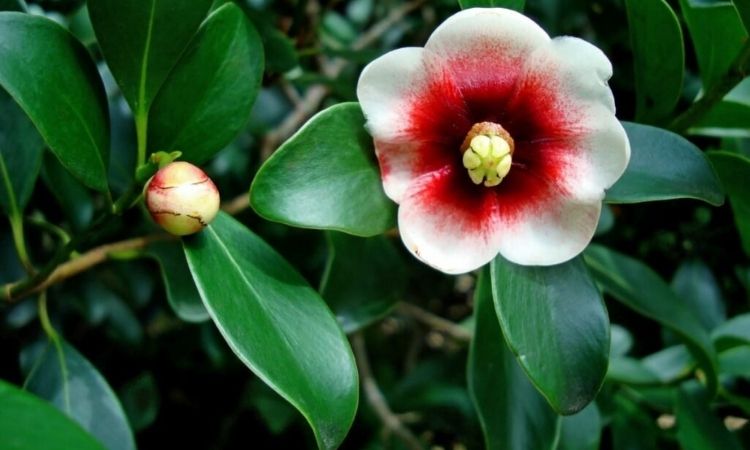
This can store water and nutrients very well with the clay minerals it contains and gradually releases them to the plant. The use of natural raw materials in the production of our soil also protects the environment. To support water drainage, a layer of clay shards or pebbles at the bottom of the pot is recommended.
You Might Also Like Flowers That Start With B
Balsam apple in a jar:
It is also possible to keep the balsam apple in a jar, but tact is required. Both too high and too low water levels easily lead to fungal diseases. Therefore, it is best to fill the glass with water to the point where the fine roots of the balsam apple are covered, but the thicker roots are still in the air. Use lime-free water and change it once a week, also cleaning the glass.
Care Of The Balsam Apple
Balsam apple care includes watering and fertilizing, as well as a regular dusting of the large leaves. Care measures are limited to the growing season between March and October.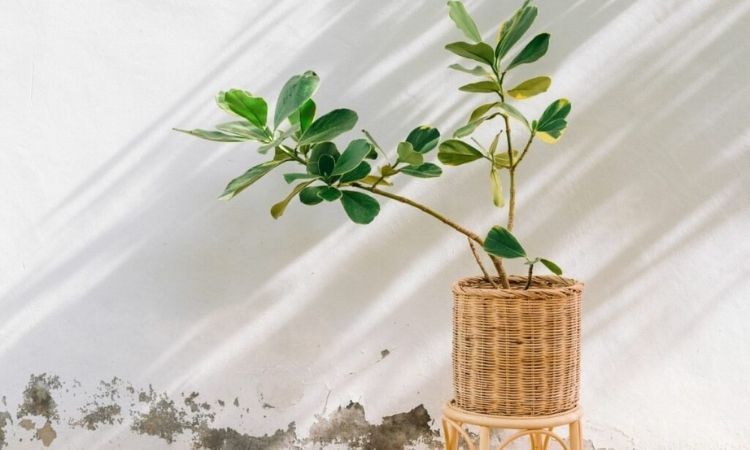
Balsam Apple Pruning, Watering And Fertilizing
Watering: To water the balsam apple, it is best to use soft, lime-free water such as rainwater. Stale tap water also works well. Check the substrate before watering: if soil sticks to your finger, the substrate is still moist enough. As soon as the surface dries, watering should be done. About 15 minutes after watering, excess water should be shaken off the planter to prevent root rot. Droopy leaves indicate an increased need for water.
Fertilizing: During the growing season in summer, the balsam apple needs a nutrient application about once a month. It is best to use a high-quality liquid fertilizer, as this can be easily administered with the watering water for houseplants. The nutrients contained sustainably supply the leaves and roots of your plants, and microorganisms ensure sufficient growth promotion.
Pruning: To stimulate branching, you can prune your young balsam apple – preferably in the spring. The older your sapling gets, the less frequently it will need pruning. Remove dead leaves regularly, and prune later only to ensure that the balsam apple does not exceed the desired size.
Overwintering: The balsam apple needs warm temperatures all year round, which should not drop below 15 °C. In case of dry heating air, you can provide higher humidity by placing a bowl of water near the plant.
Tip: The large, green leaves should be regularly cleaned of dust with a damp cloth.
Brown Spots On The Balsam Apple
If the balsam apple gets brown spots or yellow discoloration on the leaves, it is often the result of too much sunlight. Place the plant in a bright spot out of the direct sun, or protect the balsam apple at midday with a curtain, for example.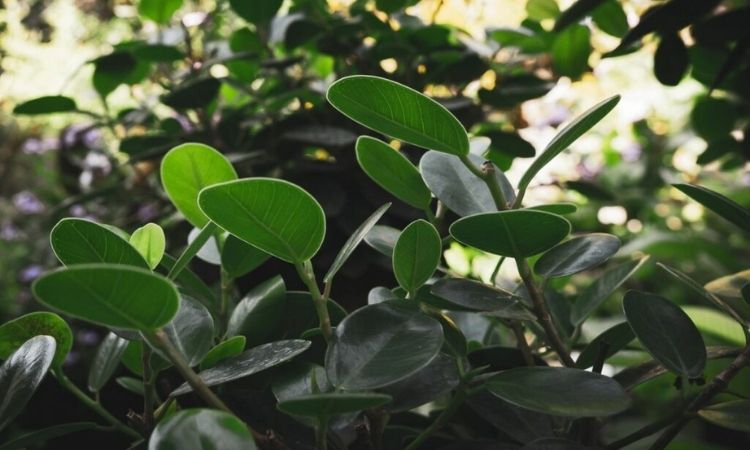
Balsam apple loses leaves
If the balsam apple stands too wet, it may drop its leaves. In this case, check the substrate and repot the plant in a fresh and dry substrate. Water a little less than before and regularly monitor the moisture of the soil. Watering should be done only when the substrate is slightly dried on the surface.
You May Also Like Pruning A Rubber Tree
Repot Clusia
As with almost all plants, spring is the best time to repot the balsam apple. This should be done about every two to three years. First, check to see if the substrate is fully rooted. If this is the case, you should choose a slightly larger container and plant the balsam apple in a permeable substrate. A layer of clay shards will ensure the necessary water drainage. If the root ball does not yet fill the container, it is sufficient to replace the upper layer of the substrate. When repotting, you can also mix a little stock fertilizer into the soil, so you don’t have to worry about nutrient supply to the balsam apple the following year.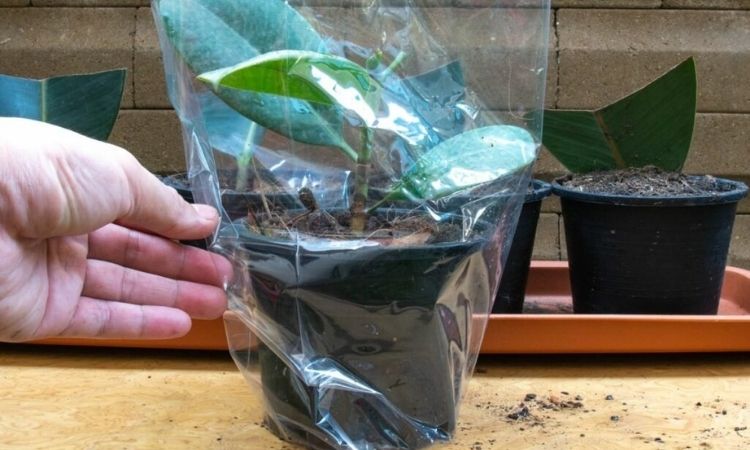
Propagating The Balsam Apple
To propagate the balsam apple, cuttings are best used. To do this, simply cut one or more shoots diagonally from the plant with a sharp knife in the spring. These should have leaves but no flower buds and be at least 10 cm long.
Now there are two options: The cutting can be placed directly in a glass of water, which makes root development directly observable. The water should then be replaced every few days. A plastic bag over the glass increases the humidity and accelerates growth.
Alternatively, allow the cutting to dry out for about two days and then plant it in a growing medium. This, with its lower nutrient content, will ensure strong root growth at a young age, so that the small plants can take hold and grow magnificently in the future. Keep the substrate evenly moist without overwatering it. Here, too, a plastic bag put over can accelerate growth.
Is The Balsam Apple Poisonous?
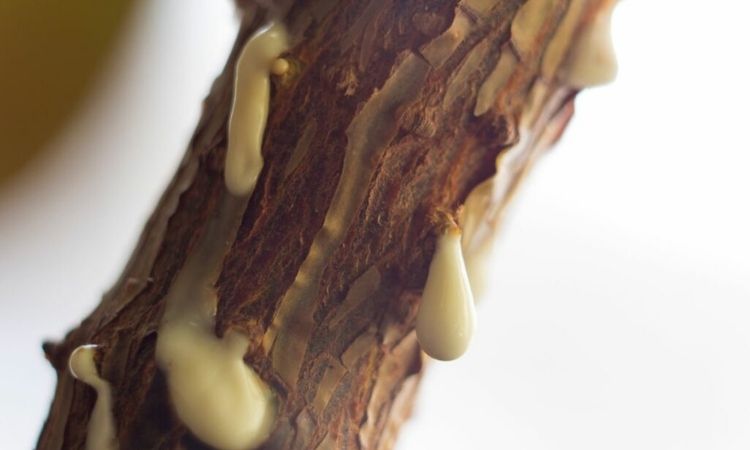 Since the balsam apple is poisonous – both to humans and animals – it should not be consumed under any circumstances.
Since the balsam apple is poisonous – both to humans and animals – it should not be consumed under any circumstances.
The gum tree looks quite similar to the balsam apple, even though there is no relationship. We show how to care for the gum tree and give useful tips on location and propagation.
